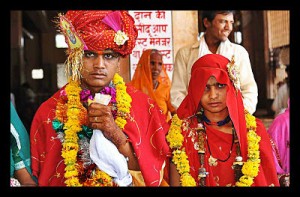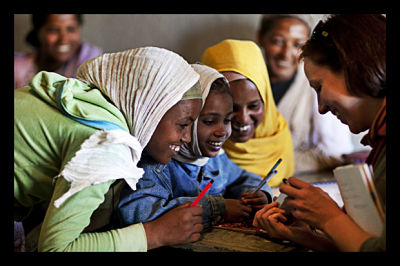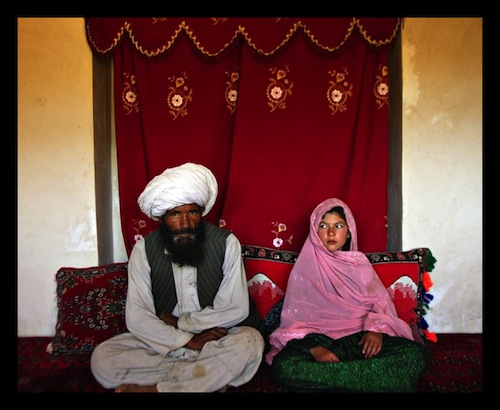Each year, an estimated 14 million girls under the age of 18 become child brides, often marrying much older men. In the developing world, one in three girls are married before their 15th birthday, and brides may be as young as eight years old.
Children are neither physically nor emotionally prepared for marriage and child brides as their brains have not fully developed the cognitive processes required for mature behavior and thought. In addition, child brides face a greater risk of complications during pregnancy and childbirth due to their small stature. They also face an increased risk of suffering domestic violence and contracting HIV/AIDS from their more sexually experienced husbands. This archaic practice unfairly stacks obstacles in front of young girls that inhibit their chances of getting an education or reaching a stable economic position.
The non-profit Girls Not Brides recognizes the urgency of addressing this issue. They understand that child marriage strips girls of their childhood, their right to health and security, and their ability to choose for themselves whom and when to marry. The practice also severely restricts girls’ educational and economic opportunities thereby trapping them in poverty.
In spite of these negative implication, child marriage remains prevalent throughout the world. 75% of women aged 20-24 in Niger been child brides, along with 72% of women in Chad, 66% in Bangladesh, and 63% in Guinea.
Tradition, cultural gender roles or the value placed on each gender, and perceived security in physical or sexual assault high-risk areas perpetuate the practice of child marriage. Poverty can also be a motivating factor as parents are able to reduce family expenses by removing a child from their home, and the income provided by a dowry is often necessary for poor families.
The High-level Panel report on post-2015 development agenda agrees that the international community will not fulfill its commitment to reduce poverty unless it puts an end to child marriage. Child marriage threatens the success of the Millennium Development Goals by inhibiting girls from having access to quality education, increasing maternal mortality, decreasing infant survival, ensuring gender equality, combating HIV/AIDS, and reducing poverty. The Panel recommends that the post-2015 development agenda include a goal to empower girls and achieve gender equality, which depends on the end of child marriage.
Education is the key to fighting child marriage. If a girl in the developing world receives at least seven years of education, on average she will marry four years later than a girl who is not afforded the same privilege. Setting up support groups can also help reduce feelings of helplessness, and empower girls to choose when to marry. The cooperation and support of men and leaders will encourage a shift in attitudes about child marriage, and the participation of young people will keep child marriage from spreading to the next generation. Other ways to end the crisis include enforcing laws that set a legal marriage age, launching incentives such as loans or conditional cash transfers, and utilizing media campaigns to raise awareness and pressure governments to take action.
– Dana Johnson
Source: Girls Not Brides,Skoll Foundation,UNICEF
Photo: Child Trafficking and Child Abuse has to Come to an End



